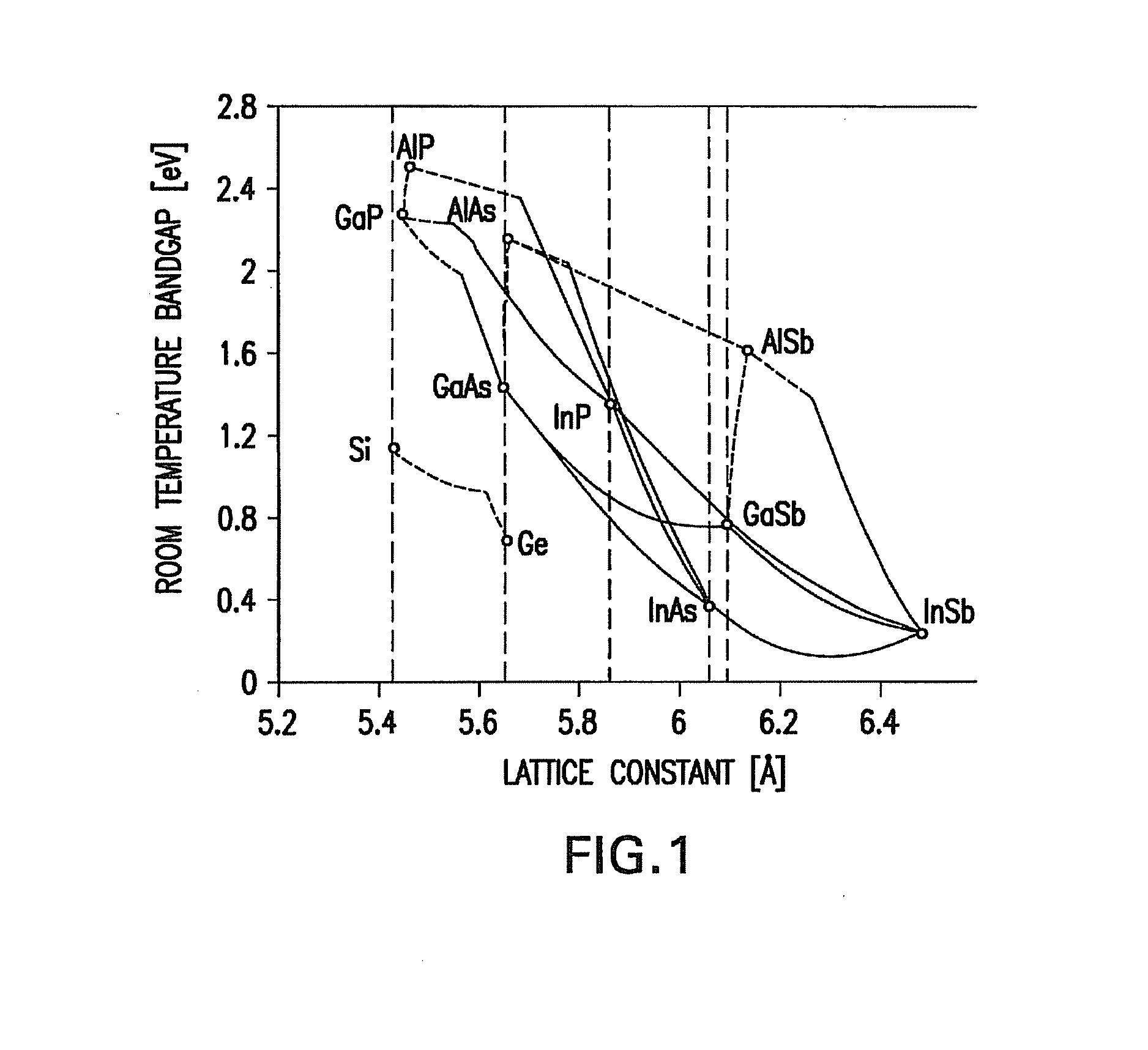Inverted multijunction solar cells with group iv alloys
a solar cell and alloy technology, applied in the field of semiconductor devices, can solve problems such as tensors of complex manufacturing
- Summary
- Abstract
- Description
- Claims
- Application Information
AI Technical Summary
Benefits of technology
Problems solved by technology
Method used
Image
Examples
first embodiment
[0051]FIG. 2A depicts the multijunction solar cell according to the present invention after the sequential formation of the three subcells A, B, and C on a GaAs growth substrate. More particularly, there is shown a substrate 101, which is preferably gallium arsenide (GaAs), but may also be germanium (Ge) or other suitable material. For GaAs, the substrate is preferably a 15° off-cut substrate, that is to say, its surface is orientated 15° off the (100) plane towards the (111)A plane, as more fully described in U.S. Patent Application Pub. No. 2009 / 0229662 A1 (Stan et al.). Other alternative growth substrates, such as described in U.S. Pat. No. 7,785,989 B2 (Sharps et al.), may be used as well.
[0052]In the case of a Ge substrate, a nucleation layer (not shown) is deposited directly on the substrate 101. On the substrate, or over the nucleation layer (in the case of a Ge substrate), a buffer layer 102 and an etch stop layer 103 are further deposited. In the case of GaAs substrate, the...
second embodiment
[0071]FIG. 2B depicts the multijunction solar cell according to the present invention after the sequential formation of the four subcells A, B, C, and D on a GaAs growth substrate. More particularly, there is shown a substrate 101, which is preferably gallium arsenide (GaAs), but may also be germanium (Ge) or other suitable material. For GaAs, the substrate is preferably a 15° off-cut substrate, that is to say, its surface is orientated 15° off the (100) plane towards the (111)A plane, as more fully described in U.S. Patent Application Pub. No. 2009 / 0229662 A1 (Stan et al.). Other alternative growth substrates, such as described in U.S. Pat. No. 7,785,989 B2 (Sharps et al.), may be used as well.
[0072]The composition of layers 101 through 117 in the embodiment of FIG. 2B are similar to those described in the embodiment of FIG. 2A, but may have different elemental compositions or dopant concentrations, and will not be repeated here.
[0073]In the embodiment of FIG. 2B, a BSF layer 118, ...
third embodiment
[0147]FIG. 14C is a cross-sectional view of the solar cell of FIG. 12B after the next process step in the present invention in which a cover glass 514 is secured to the top of the cell by an adhesive 513. The cover glass 514 is typically about 4 mils thick and preferably covers the entire channel 510, extends over a portion of the mesa 516, but does not extend to channel 511. Although the use of a cover glass is desirable for many environmental conditions and applications, it is not necessary for all implementations, and additional layers or structures may also be utilized for providing additional support or environmental protection to the solar cell.
[0148]FIG. 14D is a cross-sectional view of the solar cell of FIG. 14A after the next process step in some embodiments of the present invention in which the bond layer, the surrogate substrate 150 and the peripheral portion 517 of the wafer are entirely removed, leaving only the solar cell with the ARC layer 160 (or other layers or stru...
PUM
| Property | Measurement | Unit |
|---|---|---|
| band gap | aaaaa | aaaaa |
| band gap | aaaaa | aaaaa |
| band gap | aaaaa | aaaaa |
Abstract
Description
Claims
Application Information
 Login to View More
Login to View More - R&D
- Intellectual Property
- Life Sciences
- Materials
- Tech Scout
- Unparalleled Data Quality
- Higher Quality Content
- 60% Fewer Hallucinations
Browse by: Latest US Patents, China's latest patents, Technical Efficacy Thesaurus, Application Domain, Technology Topic, Popular Technical Reports.
© 2025 PatSnap. All rights reserved.Legal|Privacy policy|Modern Slavery Act Transparency Statement|Sitemap|About US| Contact US: help@patsnap.com



